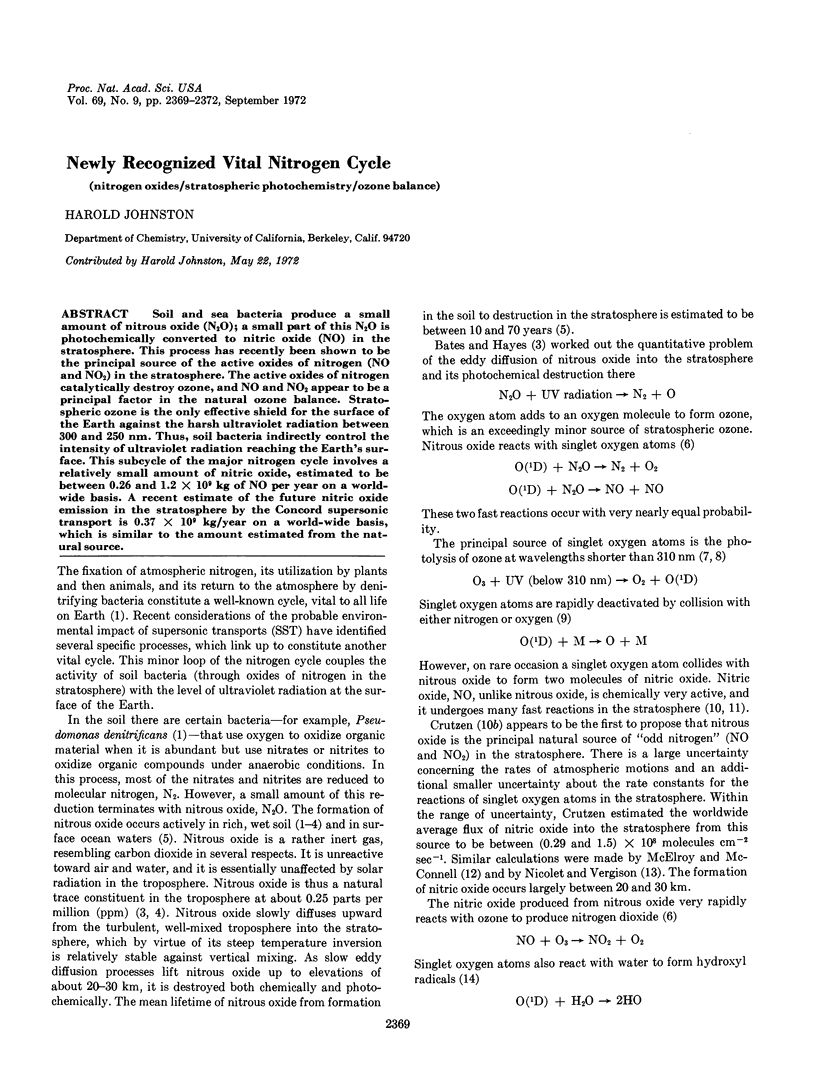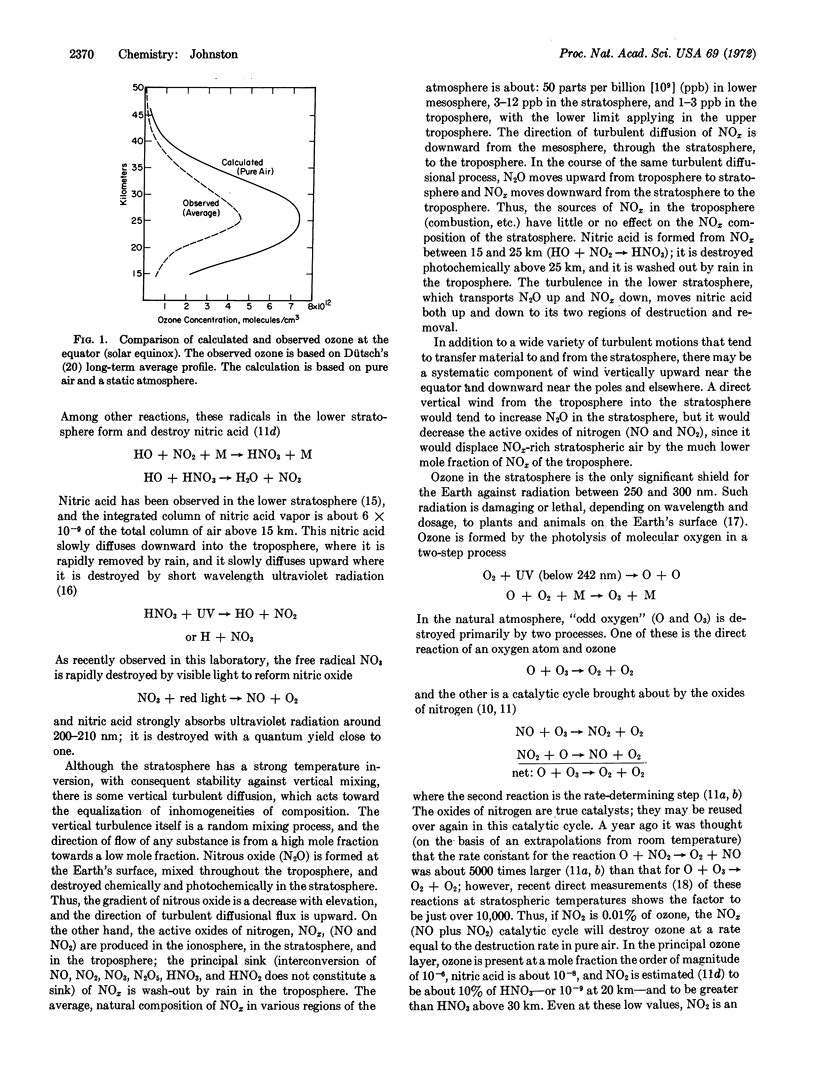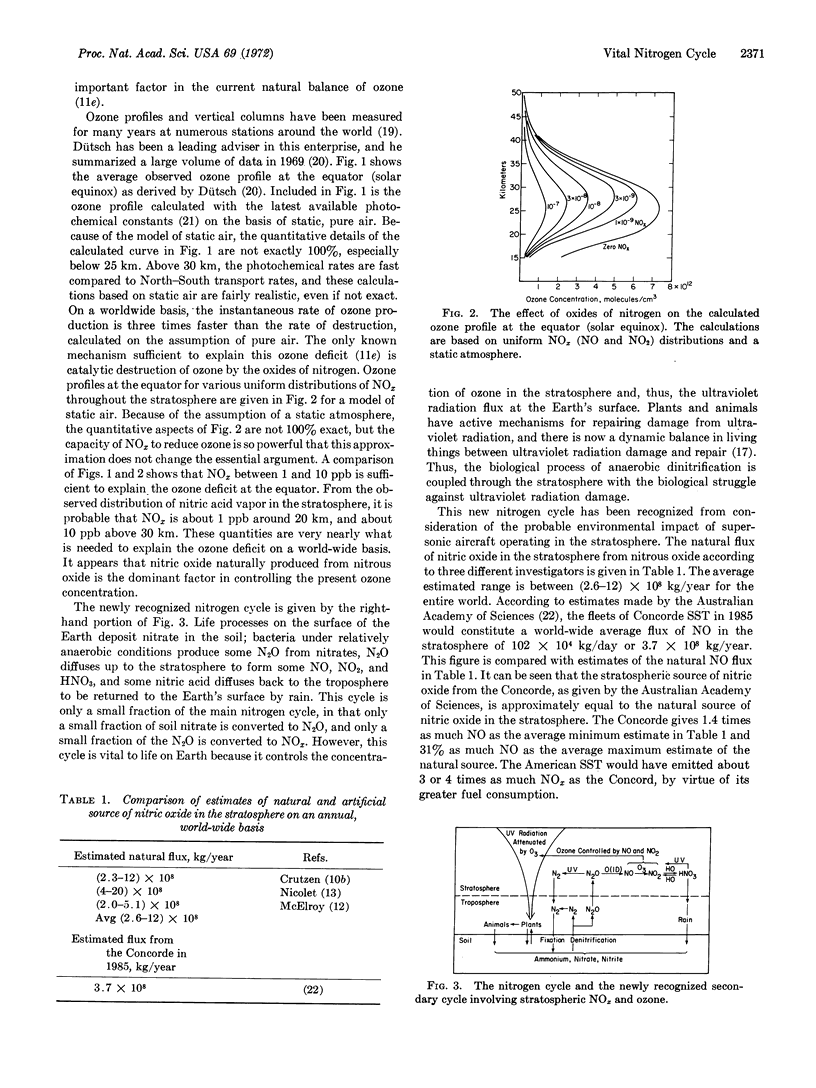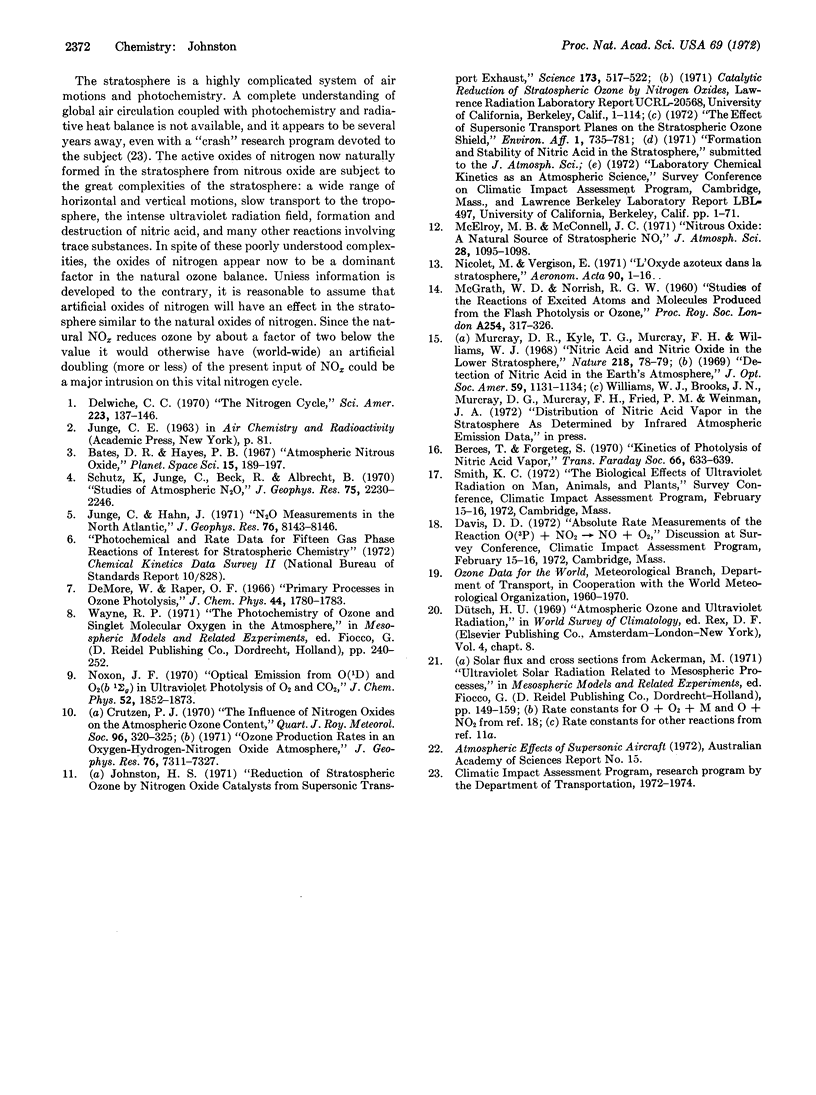Abstract
Soil and sea bacteria produce a small amount of nitrous oxide (N2O); a small part of this N2O is photochemically converted to nitric oxide (NO) in the stratosphere. This process has recently been shown to be the principal source of the active oxides of nitrogen (NO and NO2) in the stratosphere. The active oxides of nitrogen catalytically destroy ozone, and NO and NO2 appear to be a principal factor in the natural ozone balance. Stratospheric ozone is the only effective shield for the surface of the Earth against the harsh ultraviolet radiation between 300 and 250 nm. Thus, soil bacteria indirectly control the intensity of ultraviolet radiation reaching the Earth's surface. This subcycle of the major nitrogen cycle involves a relatively small amount of nitric oxide, estimated to be between 0.26 and 1.2 × 109 kg of NO per year on a worldwide basis. A recent estimate of the future nitric oxide emission in the stratosphere by the Concord supersonic transport is 0.37 × 109 kg/year on a world-wide basis, which is similar to the amount estimated from the natural source.
Keywords: nitrogen oxides, stratospheric photochemistry, ozone balance
Full text
PDF



Selected References
These references are in PubMed. This may not be the complete list of references from this article.
- Delwiche C. C. The nitrogen cycle. Sci Am. 1970 Sep;223(3):137–146. [PubMed] [Google Scholar]
- Johnston H. Reduction of stratospheric ozone by nitrogen oxide catalysts from supersonic transport exhaust. Science. 1971 Aug 6;173(3996):517–522. doi: 10.1126/science.173.3996.517. [DOI] [PubMed] [Google Scholar]


